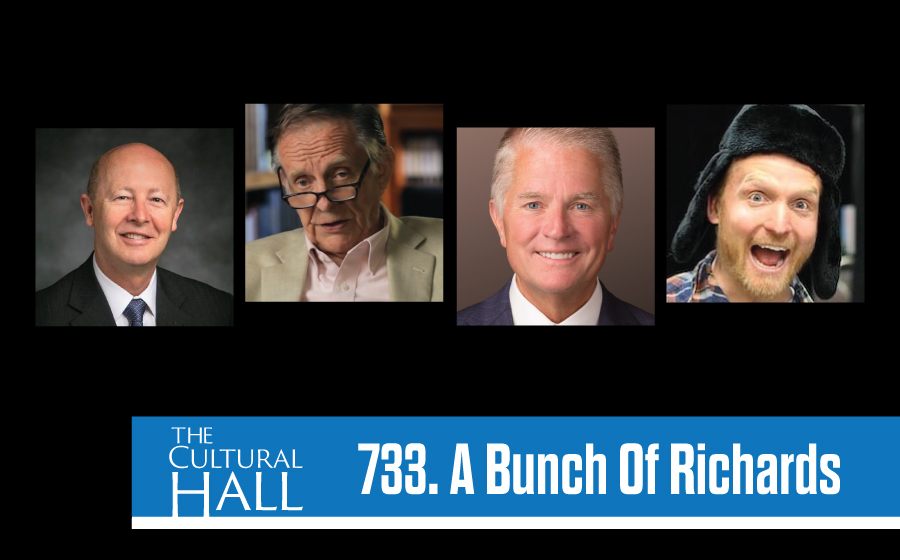Part 1 – Richard Ostler
The “Good Ship Zion” represents The Church of Jesus Christ of Latter-day Saints and all the good it can bring into our lives. But not everyone feels welcome and secure in the boat.
Instead of putting the responsibility on others to get comfortable – or to figuratively stop rocking the boat – we can all work in our circles of influence to improve the Good Ship Zion for everyone, as we journey together to the safe harbor of God’s presence. “It’s just a really big boat.”
This book addresses:
- Loving members who are “foyer sitters”
- Is it okay to turn down a calling?
- Ministering to those with church-generated pain or trauma
- How should we treat those who leave the Church?
- Supporting members dealing with death
- Better support for single Latter-day Saints
- Supporting couples in their decisions about children.
Through the power of storytelling, former YSA bishop Richard Ostler invites all of us to listen, learn, and love so we can do our part to make the Church more welcoming. This book – which is supportive of the Church, its leaders, and doctrine – is an extension of Ostler’s enormously popular podcast Listen, Learn & Love, and his previous two books. Visit his website.
Part 2 – Richard Turley
Turley has written more than 20 books, including Victims: The LDS Church and the Mark Hoffman Case and Vengeance is Mine: The Mountain Meadows Massacre and Its Aftermath.
“The First Presidency of The Church of Jesus Christ of Latter-day Saints has commissioned former Assistant Church Historian and Recorder Richard E. Turley Jr. to write a new biography of the Prophet Joseph Smith. The book will be called “Joseph the Prophet.”
President Dallin H. Oaks of the First Presidency made the announcement at the end of his keynote remarks at the seventh annual Joseph Smith Papers conference in the Conference Center Theater in Salt Lake City on Friday, September 15, 2023.
“With the completion of the Joseph Smith Papers [in June 2023], a firm foundation has been laid on which additional works can be solidly built,” President Oaks said.
The new biography will take years to complete. Teams aiding on the project include Church History Department scholars, including many who worked on the Joseph Smith Papers volumes and who collectively have already devoted decades of study to the Prophet. Staff and volunteers of the Family History Department are also contributing their skills in local research and building databases to help answer important questions. Professors from BYU have joined seasoned legal scholars and interns from the J. Reuben Clark Law School to study the legal papers of Joseph Smith and his family.
The biography will rely on the research of these and other scholars, who are expected to generate a number of publications with detailed findings on which the biography can then rely. The biography itself will be written as a narrative for a general audience and is expected to garner a wide readership.
He has served as the managing director of the Church Historical Department (as it was then called) when the Joseph Smith Papers were launched in June 2001 and served as chair of the project’s editorial board, as well as a volume editor. He was managing director of the Family History Department when FamilySearch was launched and later served as managing director of the Church’s Public Affairs and Communication Departments.” (Church Newsroom)
Part 3 Richard Bushman
Renowned historian Richard Lyman Bushman presents a vibrant history of the objects that gave birth to a new religion. He’s perhaps best known for Joseph Smith: Rough Stone Rolling, but he’s at work on a commissioned book about Joseph Smith with new information and a lens of his prophetic calling.
According to Joseph Smith, in September of 1823 an angel appeared to him and directed him to a hill near his home. Buried there Smith found a box containing a stack of thin metal sheets, gold in color, about six inches wide, eight inches long, piled six or so inches high, bound together by large rings, and covered with what appeared to be ancient engravings.
Exactly four years later, the angel allowed Smith to take the plates and instructed him to translate them into English. When the text was published, a new religion was born. The plates have had a long and active life, and the question of their reality has hovered over them from the beginning. Months before the Book of Mormon was published, newspapers began reporting on the discovery of a “Golden Bible.” Within a few years over a hundred articles had appeared. Critics denounced Smith as a charlatan for claiming to have a wondrous object that he refused to show, while believers countered by pointing to witnesses who said they saw the plates.
Two hundred years later the mystery of the gold plates remains. In this book renowned historian of Mormonism Richard Lyman Bushman offers a cultural history of the gold plates.
Bushman examines how the plates have been imagined by both believers and critics–and by treasure-seekers, novelists, artists, scholars, and others–from Smith’s first encounter with them to the present. Why have they been remembered, and how have they been used? And why do they remain objects of fascination to this day? By examining these questions, Bushman sheds new light on Mormon history and on the role of enchantment in the modern world.
*This page includes affiliate links.
Podcast: Play in new window | Download
Subscribe: RSS

